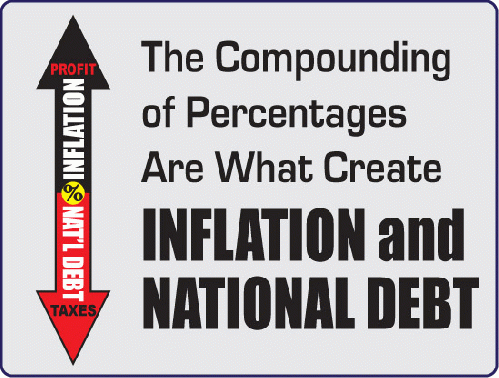A Balance Sheet attempts to summarize an entity's financial condition. It documents assets, liability and equity. Equity is the difference between assets and liabilities. Much like a budget, equity is either a positive or a negative, rich or poor. On a traditional balance sheet, equity is the value of property, and would be referred to as "owner equity.' He "owns' the business, and equity reflects what the business is worth after all bills are paid.
Trade is the exchange of goods for money. The Balance Sheet reflects both sides of the exchange, and our role as both buyer and seller. It contains what is owned and what is owed, as mathematical amounts. As such, the existence of a chicken coop, chickens and eggs must be transposed into a dollar value. Given what we know about inflation, the value is almost meaningless. It can be any number and describe the same thing. The interest in a Balance Sheet, like a budget, stems from a concern about ratios.
Just as a business has a Balance Sheet, a nation also has a macro Balance Sheet. For a nation, equity is the people and its infrastructure, both the physical and the spiritual. The entirety of National Equity cannot be valued mathematically, but it is obvious in the Quality of Life of the people. The extremes of civil war or renaissance are both possible. Spiritual equity is as volatile as any set of numbers, as waves of trust or mistrust spread across the people. The physical equity varies from place to place. There are poor towns and rich towns, poor states and rich states. America, compared to some parts of the world, has accumulated a lot of wealth after years of building and manufacturing.
In the National Balance Sheet, the difference between the private and public sectors is the difference between assets and liabilities. Regardless of how things are valued, the math needs to balance. If the nation is $16 Trillion in debt, then there needs to be $16 trillion in assets and equity in the private sector.
The GDP/GNP measures the inflation of goods as they are moved and consumed. It is an annual snapshot that summarizes the transactions for one year. The National Debt reflects the same activity, but is the summary total for many years. The National Debt measures all inflation since the origin of the nation. Money is man-made, and there is nothing to measure that is not inflation.
The formula for the National Balance Sheet is: the National Debt is the inverse of private-sector created inflation (ND=I).
Any revenue generated in the private sector corresponds to the debt of the federal government. This explains why the debt increments continually. It illuminates why "priming the pump' is necessary, and why a stimulous works before it fails.
Inflation is being recorded as both an asset and a liability. Money begins with government and to government inflation must return.
The ND=I formula can be expressed in other ways: debt equals profit (D=P); public sector debt is the inverse of private sector wealth (ND=PW); taxes equal inflation (T=I); profit equals taxes (P=T). We know that revenue equals inflation (R=I). Every transaction generates inflation. It does not matter if the transaction is "government aware' or not. Reselling your goods at a yard sale, the local school bake sale, and sales by a non-profit all generate inflation. All activity has a mathematical footprint if money is involved.
The baseline of trade is that any revenue for one is an expense for another. On the grander scale, the revenue for the private sector is the debt of the government.
The exchange of inflation makes consumption fiscally possible. Inflation and debt are the consequence of whatever percentage is used. Governments, businesses, non-profits and individuals are all full participants in the buy-low sell-high cycle. Everyone is equally responsible for the troubles with money, past and present.
inflation is the national debt by Steve Consilvio
Before money was common, taxes were paid as a share of the harvest. Government taxes to support itself. Taxing food probably did not result in hunger, but taxing money unleashed a mathematical phenomenon: inflation and debt. For taxes to be paid with money, then buying and selling must take place using the government's currency. It is a dramatic shift away from a barter economy to an accounting-ledger economy.
(Note: You can view every article as one long page if you sign up as an Advocate Member, or higher).






